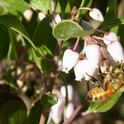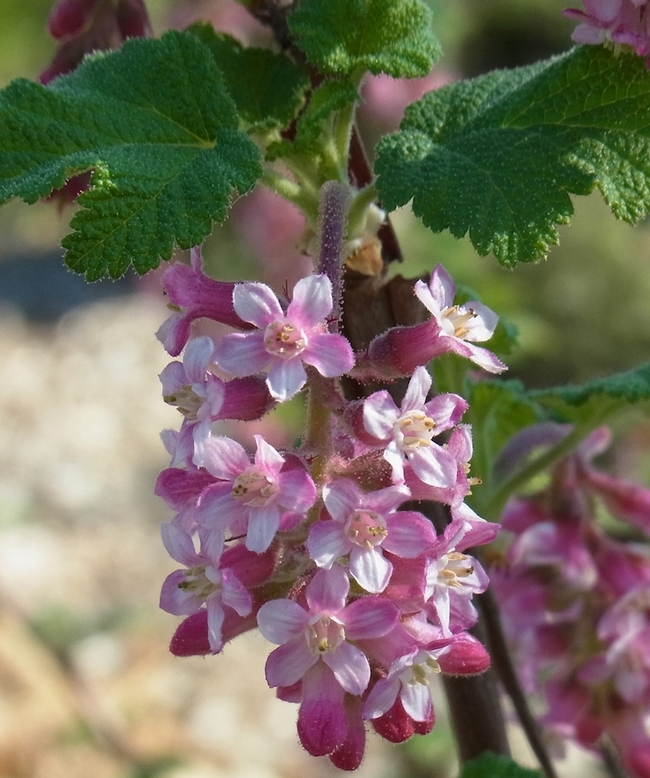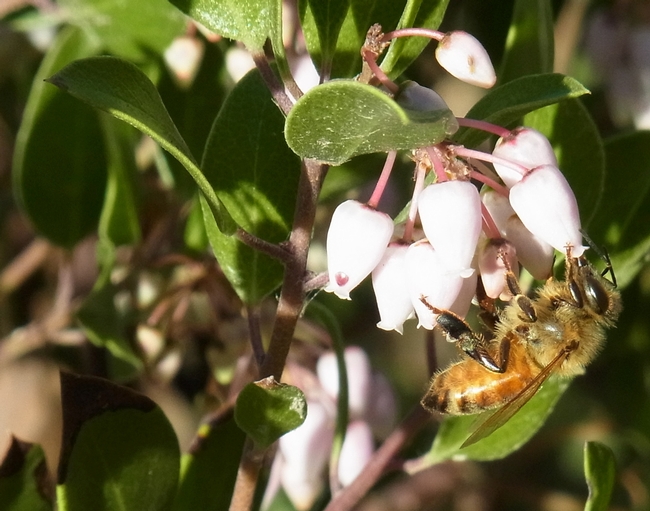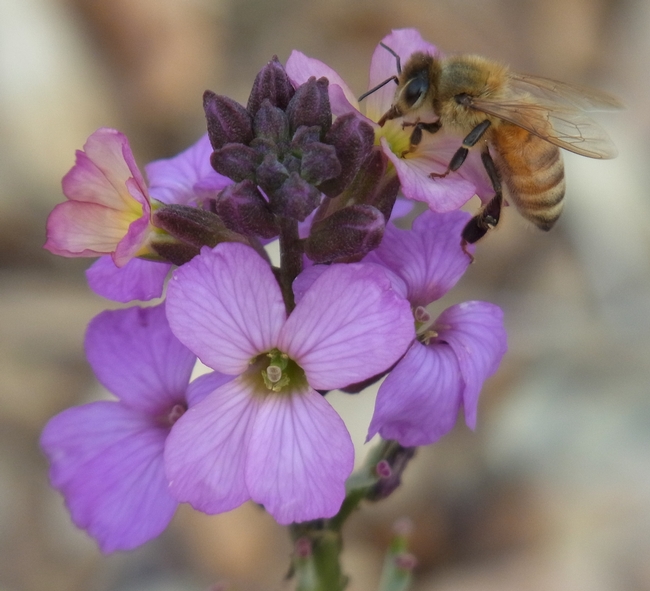


Chaparral currant 'Howard McMinn manzanita Wallflower
On President's Day we celebrate the achievements of our presidents, most notably George Washington and Abraham Lincoln. While their political and social accomplishments are well-known, many of our presidents have had connections to bees as well.
The Monticello web site tells us that Thomas Jefferson kept bees and owned the book Collateral bee-boxes: or, a new easy, and advantageous method of managing bees ; in which part of the honey is taken away, in an easy and pleasant maner, without destroying, or much disturbing the bees; early swarms, if desired, are encouraged, and late ones prevented (author Stephen White, 1759).
According to Abraham Lincoln in the Kitchen: A Culinary View of Lincoln's Life and Times by Rae Katherine Eighmey, our 16th president enjoyed cooking and his favorite food was apples. And we all know the folklore about George Washington and the cherry tree. Both these fruits rely on bees for pollination.
More recent are the current White House beehives.
While Washington, D.C. is currently snowed under, here in central California our weather is conducive to year-round honey bee activity. On any sunny day with temperatures over 55 degrees Haven visitors will see bees in the garden. Here are the red, white, and blue colors you'll see them foraging on this time of year:
Red (actually deep pink; bees do not see red):
Chaparral currant (Ribes malvaceum)
King Edward VII flowering currant (Ribes sanguineum ‘King Edward VII')
Compact Oregon grape (Berberis aquifolium ‘Compacta'); winter foliage is red but currently blooming with yellow flowers
White:
Manzanita ‘White Lanterns' (Arctostaphylos spp. ‘White Lanterns')
Manzanita ‘Howard McMinn' (Arctostaphylos spp. ‘Howard McMinn')
Manzanita ‘Sentinel' (Arctostaphylos spp. ‘Sentinel')
Manzanita ‘Sunset' (Arctostaphylos spp. ‘Sunset')
Buckbrush (Ceanothus cuneatus)
Blue (actually shades of purple):
Bush germander (Teucrium fruticans)
Rosemary ‘Mozart' (Rosmarinus officinalis ‘Mozart'); this rosemary cultivar has outstanding deep purple flowers
Wallflower (Erysimum spp.)
Ceanothus ‘Valley Violet' (Ceanothus maritimus ‘Valley Violet')
Ceanothus ‘Ray Hartman' (Ceanothus arboreus x Ceanothus thyrsiflorus var. griseus)
Ceanothus ‘Julia Phelps'
Attached Images:


